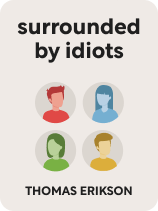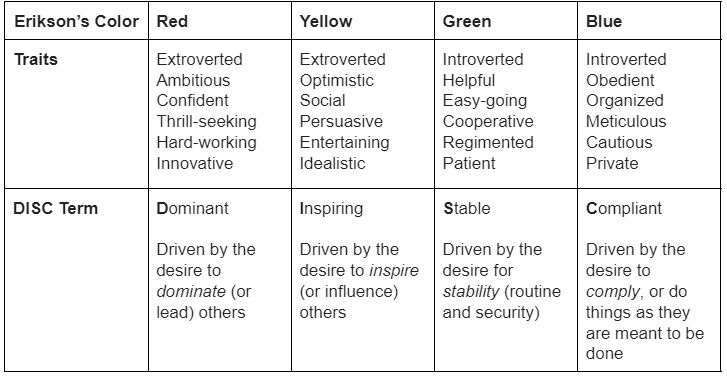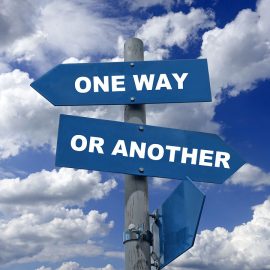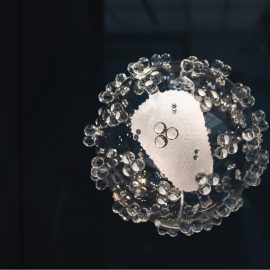

This article is an excerpt from the Shortform book guide to "Surrounded by Idiots" by Thomas Erikson. Shortform has the world's best summaries and analyses of books you should be reading.
Like this article? Sign up for a free trial here .
What are the different personality tests used in personality typing? Is personality typing useful in the modern-day?
Personality typing is not a new phenomenon. In fact, it can be traced back thousands of years. In the modern-day, personality typing is a useful tool when it comes to communication and human resources in the workplace.
Below, we’ll go over the history of personality tests and their uses, with special attention to Thomas Erickson’s color model from Surrounded by Idiots.
Personality Typing: History and Modern Use
Personality typing has garnered a lot of attention in recent years, with several bestselling books on the topic. However, it’s not a new idea to classify human behavior into distinct categories. In fact, recorded evidence of different personality tests goes as far back as the 5th century BC. Erikson’s choice to designate four categories of human personality has deep historical roots: The ancient Greeks and Romans, the Aztecs, and others have all used a four-category system of classification.
The 20th century saw a resurgence of interest in the study and classification of human behavior. Sigmund Freud, Carl Jung, and William Moulton Marston are noted for directly influencing virtually every personality typing model being used today—and as you’ll see in the next section, Erikson’s use of the DISC model is no exception. The DISC model (on which this book is based) divides personalities into four categories: people who are driven by the traits of Dominance, Influence, Stability, and Compliance.
(Shortform note: Despite being pioneered by a neurologist (Freud), psychiatrist (Jung), and psychologist (Marston), personality typing is widely denounced by modern psychologists as well as the scientific community. Often comparing it to astrology, its critics claim that personality tests are “pseudoscientific”—not consistent enough to be reliable and too subjective to be factual.)
Rejection by the scientific community hasn’t affected the popularity of personality typing, however. Erikson’s readers say that the personality typing in Surrounded by Idiots helped them recognize their own behavioral tendencies and enabled them to empathize with those who don’t think and behave as they do. (Shortform note: His readers aren’t alone: According to an article in The New York Times, personality testing is now a $500 million industry—and rising.)
Corporations’ Not-So-Secret Weapon
Businesses are increasingly investing in personality testing and consultants (such as Erikson) to boost productivity and improve interpersonal relationships. Polarization exists here as well: Critics claim that this segmentation pigeonholes people to specific teams and roles based on a personality self-assessment rather than actual performance. In some cases, personality tests have even prevented qualified applicants from being hired. Currently, human resource departments are most commonly using the following personality typing systems
| Myers-Briggs Type Indicator | The Myers-Briggs Type Indicator (MBTI) divides people into 16 personalities based on four indicators: extraversion or introversion, intuition or sensing, thinking or feeling, and perceiving or judging. Based on the research of Carl Jung, the first version of the Myers-Briggs personality assessment was released in 1944 in the United States. |
| Enneagram of Personality | Contemporary Enneagram theories were developed between the 1950s and 1990s. The Enneagram Institute was created in 1997 to give concrete form to the theories, which classify people into nine personalities (or enneagrams). |
| Hartman’s Color Code | Published in 1987, Taylor Hartman’s Color Code classifies people into four colors: Red, Blue, White, and Yellow. They are distinguished primarily by what motivates them: power, intimacy, peace, and fun (respectively). |
| DISC Model | Based on Marston’s work in the 1920s, the DISC model places people into one of four categories. The factors used to determine placement include: pace of living/working, interest in people versus task, and extroversion versus introversion. |
Erikson’s Color Model
Erikson discusses four personality types in terms of colors: Red, Yellow, Green, and Blue. Throughout the text, he refers to people by personality type as Red people, Yellow people, and so on. Erikson’s color model is based on the DISC model, which categorizes people as Dominant, Inspiring, Stable, or Compliant. He explains that he chose to use colors instead of the DISC terms because they are easier to understand, connect to, and remember.
According to Erikson, only 5% of people are one color, or have a single personality type; 80% are two colors or types, and 15% are three. The Green personality type is the most common, and an entirely Red personality is the rarest.
(Shortform note: Erikson doesn’t explain how he determined these percentages, and because personality types can’t be classified with scientific certainty, the numbers are impossible to prove or refute.)

(Shortform note: Erikson cites the DISC model as the basis for his book but doesn’t specify how the two models align or differ. Depending on the source, descriptions of the DISC model vary. The exact words for the acronym DISC are up for debate, as Erikson uses a few variations in this book, and there are several others from various sources. For example, Erikson refers to the “I” in DISC as both “Influential” and “Inspiring.” Other sources name the “S” as “Submission” or “Steadiness,” and Erikson uses “Stable.” The general meaning behind all of the words remains the same, however.)
As you read about each color, Erikson says you will recognize yourself and others. While you might see characteristics that are not flattering, he urges you to remember that no color or personality type is good or bad in itself. Rather, he explains that some colors are better suited to certain roles than others, and each communicates in a unique style. By learning more about yourself and the people you work with, you should experience greater work satisfaction.
| The Psychology of Color Erikson explains that he chose to use colors instead of the DISC terms for ease of understanding, but he doesn’t explain why he chose the colors that he did, or how he assigned them. One field of psychology specifically studies the effect of color on our bodies and minds. The research is highly anecdotal, but enough patterns have emerged that psychologists believe there are some universal truths when it comes to color psychology. Red: One study found a link between the perception of dominance, the color red, and testosterone. The participants (all men) who chose to wear red during a competitive event were determined to have higher levels of testosterone than the participants who chose to wear blue. In a questionnaire, the participants who chose red wrote that they associated the color with dominance and aggression, which they believed would help them in the competition. Yellow: Color psychology says that people associate yellow with optimism, energy, and warmth—very likely due to our relationship with the sun. It has also been shown to cause feelings of frustration and overwhelm when overdone. Green: Green often brings to mind images of nature, which tend to have a calming effect. Green has long been a symbol of fertility and new life because of its connection to spring. Green environments have both water and sunshine, so it is perceived as a safe and nurturing color, where living things will thrive. Blue: Most people associate blue with water, which explains why it brings feelings of serenity and reliability. Unlike plant life, water doesn’t change colors through the seasons; it is always the color you expect it to be. Blue is perceived as conservative and safe, but cold. |

———End of Preview———
Like what you just read? Read the rest of the world's best book summary and analysis of Thomas Erikson's "Surrounded by Idiots" at Shortform .
Here's what you'll find in our full Surrounded by Idiots summary :
- A detailed look at Thomas Erikson's four personality types
- How to navigate conflicts with coworkers
- How to effectively communicate and collaborate with bosses, employees, and colleagues






